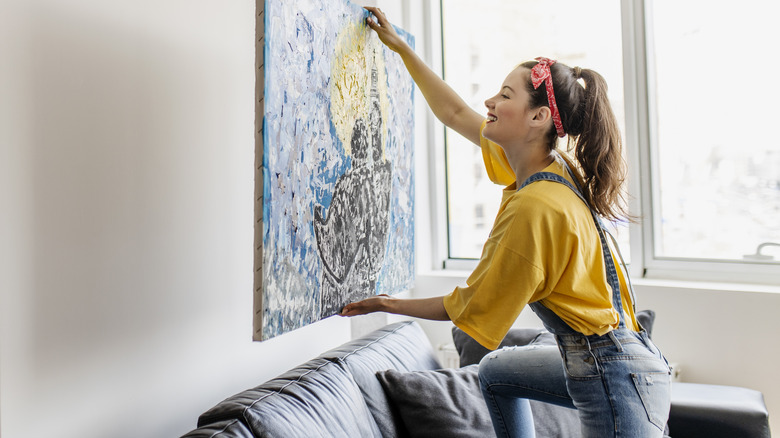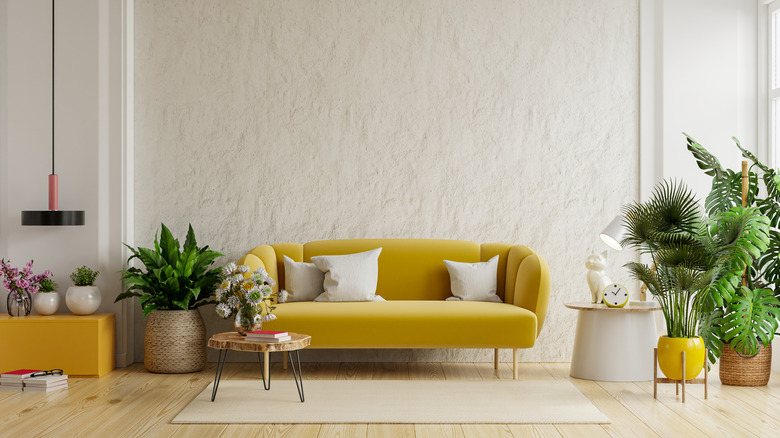The Therapy-Inspired Design Method Bobby Berk Says All Rooms Need
We may receive a commission on purchases made from links.
When looking for interior design advice that not only looks good but makes us feel good, we turn to Fab Five designer Bobby Berk. In his new book, "Right at Home: How Good Design Is Good for the Mind: An Interior Design Book," the "Queer Eye" star shows us how to transform our homes into spaces that improve with DIY approaches that support our mental health. His therapy-based technique is exactly what you need to create a sense of serenity and groundedness in each and every room of your home. Berk's method incorporates elements into your spaces that help you focus on your five senses.
This method will redirect your attention away from anxious or unwanted thoughts and instead center your mind on the present moment. This allows you to let go of the tension in your body created by the stress, leaving you in a more relaxed state. Once you calm down, you can stop ruminating on what caused you the mental discomfort and tackle the problem causing you stress without being overwhelmed. "While I'm not at all saying that design can — or should — replace professional, mental health treatment if you need it, what I am saying is that design can give you interesting stimuli to look at/smell/hear/touch to help ground you in the present moment," Berk writes in his new book.
The 5-4-3-2-1 technique
When exploring mindfulness, or the practice of being aware moment-to-moment, Bobby Berk discovered the 5-4-3-2-1 technique, a popular method therapists teach patients to help them come down from a panic or anxiety attack or to stop racing thoughts by engaging all five senses. "It struck me that interior design could be used as a tool here — creating a sensory-rich environment at home could give you lots of visually interesting pieces, colors, and images to help keep you a bit more present," Berk explains.
There are plenty of interior design elements that can be used to stimulate the senses, like weighted blankets, diffusers that fill the home with rich scents, mood lighting, textured drapery, exposed brick walls, and peel-and-stick fluted wall panels. In addition to helping us feel calm and centered, sensory-heavy homes can also help us feel more motivated to engage with and achieve different tasks in our homes.
How to use this method in your home
To use the 5-4-3-2-1 method in your home, Bobby Berk advises making a list of sensory focal points to place in the home. "List 5 things you can see, list 4 things you can touch, list 3 things you can hear, list 2 things you can smell, list 1 thing you can taste," Berk instructs. Each room in your home should have each of these elements. For example, if you're decorating your living room, you can use attention-catching elements like a bright yellow armchair, an interesting painting or piece of artwork, a chandelier or interesting light fixture, photos of friends, and family heirlooms as the "thing you can see." For the four items you can touch, try a knit throw rug, a soft fuzzy blanket, a Sherling ottoman, and a ruffled throw pillow.
Three things you can hear may include a wind chime, a sound machine, and a tabletop fountain. For your scented elements, use a candle or bathroom products that have soothing scents like lavender or eucalyptus. A covered bowl of nuts or M&Ms on your coffee table can serve as your item to taste. While it might seem that this is a lot to put into one room, it really isn't when using complementary colors and textures. In fact, it can be a lot of fun to shop for and incorporate these elements into your home.


